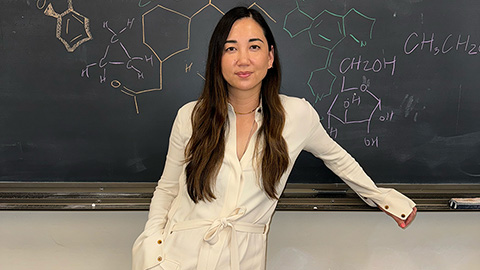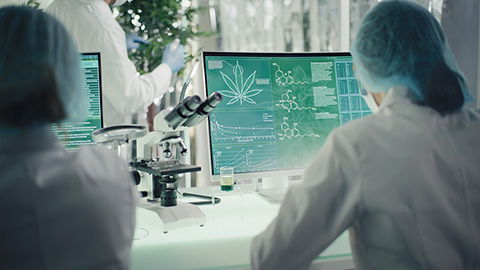As pharma loses interest in new antibiotics, infections grow stronger
Forget COVID-19, monkeypox and other viruses for the moment, and consider another threat troubling infectious disease specialists: common urinary tract infections, or UTIs, that lead to emergency room visits and even hospitalizations because of the failure of oral antibiotics.

There’s no Operation Warp Speed charging to rescue us from the germs that cause these infections, which expanded their range during the first year of the pandemic, according to a new Centers for Disease Control and Prevention report. In the past year, the FDA declined to approve two promising oral drugs — sulopenem and tebipenem — to treat drug-resistant UTIs, saying it needed more evidence they work as well as current drugs.
In the meantime, some UTI patients “have to get admitted and get an IV treatment for a bladder infection that typically would be treated with oral antibiotics,” said Dr. Sarah Doernberg, an infectious disease specialist at the University of California, San Francisco, Medical Center.
Rebecca Clausen, an office worker in Durham, North Carolina, was prescribed several courses of a cheap oral antibiotic for a persistent UTI earlier this year, but it “just seemed to keep coming back,” she said. Doctors considered a six-week treatment with an intravenous drug, ertapenem, that would have cost her about $2,000 out-of-pocket, but decided it probably wouldn’t help. For now, she’s simply hoping the infection won’t worsen.
While specialists say they are seeing more urinary tract infections that oral antibiotics can’t eliminate, the problem is still thought to be relatively rare (federal health officials don’t directly track the issue). However, it’s emblematic of a failure in the antibiotics industry that experts and even U.S. senators say can be fixed only with government intervention.
The CDC report, released July 12, showed that after mostly declining during the previous decade, the incidence rates of seven deadly antimicrobial-resistant organisms surged by an average 15% in hospitals in 2020 because of overuse in covid patients. Some of the sharpest growth occurred in bugs that cause hard-to-treat UTIs.
Although nearly 50,000 Americans — and about 1.3 million people worldwide — die of resistant bacterial infections each year, the FDA has not approved a new antibiotic since 2019. Big Pharma has mostly abandoned antibiotics development, and seven of the 12 companies that successfully brought a drug to market in the past decade went bankrupt or left the antibiotics business because of poor sales.
That’s because of a central paradox: The more an antibiotic is administered, the quicker bacteria will mutate to get around it. So practitioners are aggressively curbing use of the drugs, with 90% of U.S. hospitals setting up stewardship programs to limit the use of antibiotics, including new ones. That, in turn, has caused investors to lose interest in the antibiotics industry.
A pipeline of new drugs is vital, given the implacable capacity of bacteria to mutate and adapt. But while resistance is an ever-present danger, some 90%-95% of fatal infections involve microbes that are not multidrug-resistant but difficult to treat for other reasons, such as the delicate condition of the patient, said Dr. Sameer Kadri, head of clinical epidemiology at the National Institutes of Health Clinical Center’s Critical Care Medicine Department.
“As bad as antibiotic resistance is, it’s bad against a minority of people,” said Jason Gallagher, a professor and infectious diseases pharmacist at Temple University Hospital in Philadelphia. Since clinicians usually can’t quickly determine a bug’s resistance level, they start with the old drug most of the time. “That makes anti-infectives a pretty tough investment from a drug company perspective,” he added. “You’re going to develop your drug and people are going to do their best to not use it.”
As antibiotics companies disappear, so does their scientific expertise, said Dr. David Shlaes, a retired pharmaceutical industry scientist. Should a particularly deadly pattern of resistance develop with no drug pipeline, it could cause destruction on a hair-raising scale, he said.
“Antibiotics are an essential part of civilization,” said Kevin Outterson, a Boston University law professor who leads a public-private fund that helps companies develop antimicrobials. “They must be renewed every generation or we will slip back into the pre-antibiotic era.”
The roadblocks to approval of the UTI drugs tebipenem and sulopenem illustrate the complexity and regulatory challenges of the antibiotics arena.
In a big clinical trial completed last year, Iterum Therapeutics’ sulopenem was far better than an older drug, ciprofloxacin, at reducing UTI symptoms, but it didn’t seem as adept at killing bacteria, which the FDA considered to be an equally important measure of success. At a June 3 workshop, FDA officials indicated they might be willing to change their standard in future trials.
Another company, Spero Therapeutics, published what looked like a successful trial for oral tebipenem in the New England Journal of Medicine in April. But FDA officials rejected Spero’s application for licensure because a species of bacteria included in the analysis was deemed irrelevant to the drug’s efficacy.
A lifeline for patients
Though new oral drugs against UTIs are sorely needed, IV drugs can still conquer most routine UTIs. But the broader threat of a future without new antibiotics is particularly frightening to patients with serious chronic diseases, who are permanently engaged in struggles with bacteria.
Two or three times a day, Molly Pam, a 33-year-old chef and patient advocate in San Francisco, inhales nebulized blasts of colistin or aztreonam. These are antibiotics that the typical person stays away from, but for the 30,000 U.S. cystic fibrosis patients like Pam, deadly bugs and powerful drugs are a fixture of life.
Several times a year, when fever or exhaustion signals that the bugs colonizing her damaged, mucus-clogged lungs are getting overly procreative, Pam heads to a clinic or hospital for IV treatment. In 2019, just as she was approaching resistance to all antibiotics, the drug Zerbaxa received FDA approval.
Pseudomonas and MRSA bacteria have colonized Pam’s lungs since she was a child, their mutations requiring frequent antibiotic updates. In 2018, she was struck down with a drug-resistant, tuberculosis-like bacteria that required a year of three-times-a-day IV drug treatments on top of her other drugs. Last year, she was airlifted to Stanford Medical Center after she began coughing up blood from a damaged lung.
Doctors test Pam’s sputum four times a year to determine which bugs she’s harboring and which antibiotics will work against them. She’s always only a few mutations from disaster.
“I absolutely depend on new drugs,” Pam said.
Steering stewardship programs
The development and testing of these new molecules is hardscrabble terrain, featuring frequent conflicts between the FDA and industry over how to measure an antibiotic’s effectiveness — is it patient survival? Symptom improvement? Bacteria count? And over how long a period?
Meanwhile, Congress has aided the industry with patent extensions, and federal agencies have poured in hundreds of millions in grants and partnerships. The World Health Organization and the drug industry in 2020 created a $1 billion venture capital fund to support worthy antibiotics companies.
Still, stewardship of antibiotics arguably has had the biggest influence in reducing the threat of resistance. A 2019 CDC report found an 18% reduction since 2013 in deaths caused by drug-resistant organisms, and a 21% decline in infections of MRSA, or methicillin-resistant Staphylococcus aureus, once a leading medical bogeyman.

a special report titled “COVID-19: U.S. Impact on Antimicrobial
Resistance” that concluded that “the threat of antimicrobial-resistant
infections is not only still present but has gotten worse.”
But progress can make it harder to test new drugs. With highly resistant bacterial infections still relatively unusual, clinical trials for new drugs generally measure their effectiveness against all bacteria in the relevant class, rather than the most resistant bugs.
And since new drugs often gain approval simply by showing they are roughly as effective as existing drugs, infectious disease doctors generally shun them, at least initially, skeptical of their relatively high prices and questionable superiority.
“There aren’t that many people with antibiotic resistance,” said Dr. Emily Spivak, who leads stewardship programs at the University of Utah and VA Salt Lake City hospitals. “When people get these infections, it’s horrible. But there aren’t enough to make the kind of profits the companies want.”
For example, hospitalized patients with MRSA-related pneumonia often can be treated with vancomycin (starting at about $15 per day), said Spivak, who chairs the Infectious Diseases Society of America’s antimicrobial resistance committee. She sometimes turns to a newer alternative, ceftaroline ($400 a day), which can have fewer side effects. “But even so, we are not cranking through these drugs, and we never will, because luckily we can do other things to prevent MRSA, such as cleaning skin before surgery and keeping catheters clean.”
Time for ‘Warp Speed’?
In the early days of covid, many hospitals desperately threw antimicrobials at the mysterious virus, and the pandemic crisis strained stewardship teams, Spivak said. The new CDC data showed that clinicians gave antibiotics to 80% of hospitalized covid patients in the first eight months of the pandemic, although such drugs have no impact on covid infection.
But the uptake of new antibiotics has been slow. A report on 17 new antibiotics marketed in the United States over the past five years showed only three with sales over $100 million per year. The 17 averaged sales of about $44 million for the 12 months ending in June 2020.
A few of the new drugs, such as a combination antibiotic marketed in the U.S. as Avycaz, have gradually replaced colistin, a highly toxic 1950s compound that was brought back in 2000 because of its efficacy against certain resistant bacteria.
Yet even that transition, recommended by infectious disease specialists, was gradual. That’s not surprising since colistin costs about $140 for a 10-day treatment, while a course of Avycaz might set a hospital back $14,000 to $28,000, noted Dominic Chan, chief of pharmacy services at Legacy Health in Oregon.
Medicare reimbursement for treating hospital infections is low, Chan said, “so there’s no incentive for the hospitals to invest that type of capital into bringing these agents in — other than doing the right thing.”
In most cases, hospitals do appear to be doing the right thing, however. Recent CDC data shows that 90% of U.S. hospitals have stopped using colistin, said agency spokesperson Martha Sharan.
Executives from the dwindling number of antibiotics makers complain that stewardship programs are too stingy, to the detriment of patients. In part, they blame Medicare programs that pay hospitals a lump sum for treatment of a given condition. A congressional bill filed in 2019 and resubmitted last year would require Medicare to pay for new antibiotics separately. Democrats blocked the bill, but antibiotics producers argue it would incentivize hospitals to use their drugs.
Holding back on the new antibiotics allows resistance to old drugs to grow worse, and “that makes it harder and harder for a new antibiotic to do its job,” said Ted Schroeder, CEO of antibiotics maker Nabriva and leader of an industry interest group.
But the bottom line is that most patients don’t need the newest drugs, Kadri said.
In a 2020 NIH study that the FDA helped fund, Kadri and his colleagues reviewed records from 134 hospitals from 2009 to 2015 to find examples of difficult-to-treat, highly resistant bacteria of the gram-negative type — a key area of concern. Of about 139,000 gram-negative infections, only 1,352 fell into the difficult-to-treat category — roughly 1%.
“There are just not enough cases” to create an adequate market for new antibiotics, Kadri said.
Extrapolating from the study, the market for new antibiotics against highly resistant gram-negative bacteria would range from $120 million to $430 million a year, compared with the average $1 billion needed to develop a single drug, wrote Drs. Neil Clancy and Minh-Hong Nguyen of the Veterans Affairs Pittsburgh Healthcare System.
In the absence of a viable market, infectious disease experts, drug companies, and patient groups have rallied behind the PASTEUR Act, introduced by Sens. Michael Bennet (D-Colo.) and Todd Young (R-Ind.) last year. The bill would create a fund of up to $11 billion over 10 years to award promising antimicrobials that were close to or had received FDA approval. The government would guarantee payments of up to $3 billion for each drug, removing the incentive for overuse.
PASTEUR has 40 co-sponsors in the Senate. Experts think its passage is crucial.
“Even though, on a population basis, the need for new drugs is small, you don’t want to be that patient” who might need them, Kadri said. “If you are, you want to have an array of drugs that are safe and effective.”
This article was originally published by Kaiser Health News.
Enjoy reading ASBMB Today?
Become a member to receive the print edition four times a year and the digital edition weekly.
Learn moreGet the latest from ASBMB Today
Enter your email address, and we’ll send you a weekly email with recent articles, interviews and more.
Latest in Industry
Industry highlights or most popular articles

Biotech startup worms its way into therapeutics
Andrea Choe's company, Holoclara, has created an anti-inflammatory drug based on a molecule from worms.

How military forensic scientists use DNA to solve mysteries
Learn how two analysts at the Armed Forces DNA Identification Laboratory use molecular biology and genetics to identify the remains of fallen troops.

Careers in industry: A year in review
Careers columnist Inayah Entzminger looks back at 12 months of interviews, advice and lists of resources.

A brief history of the performance review
Performance reviews are a widely accepted practice across all industries — including pharma and biotech. Where did the practice come from, and why do companies continue to require them?


The molecular biology of commercial cannabis testing
Anthony Torres of Front Range Biosciences, explains how scientists analyze organisms growing on the plant as well as the genetic markers in cannabis DNA.

